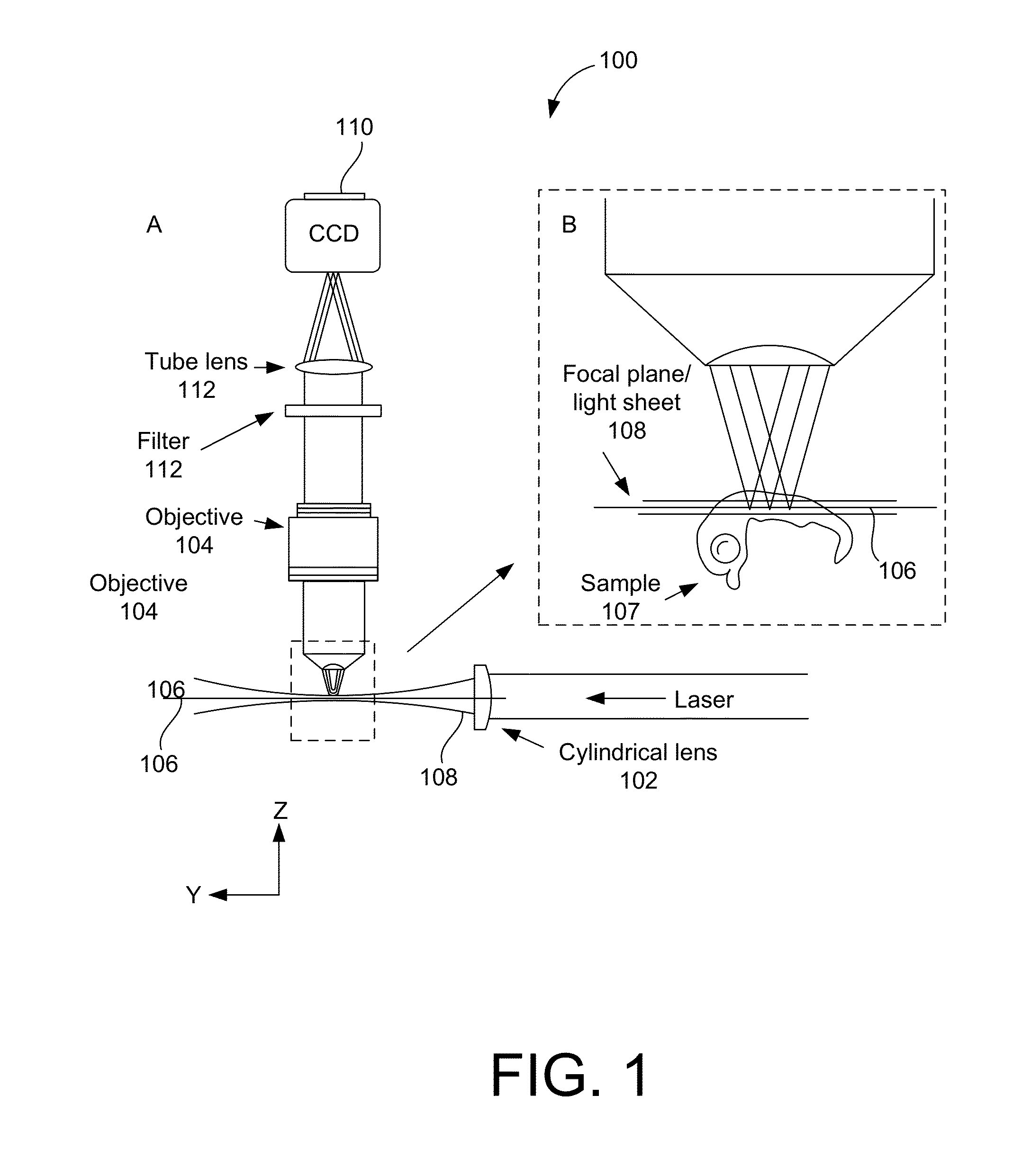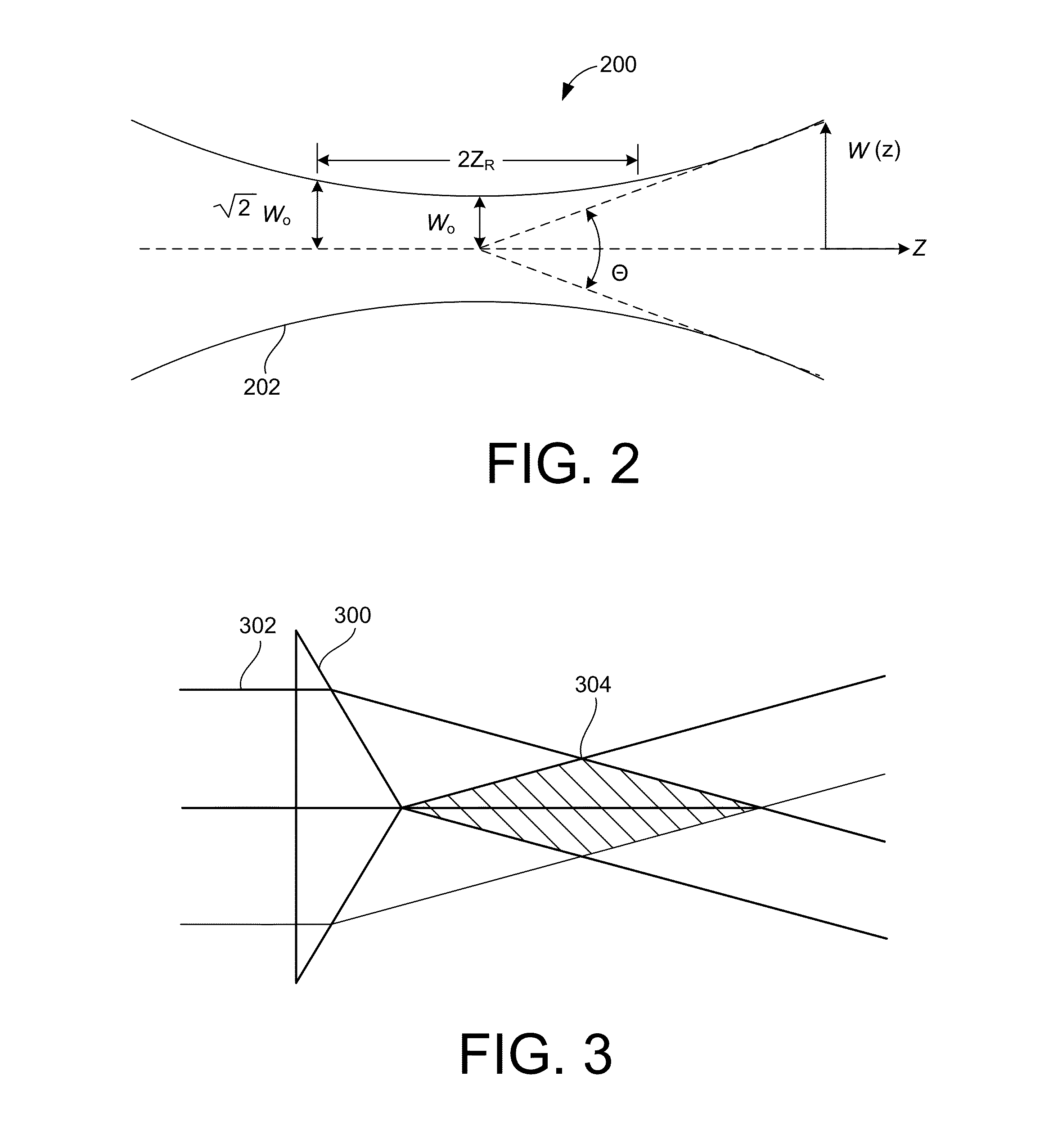Structured plane illumination microscopy
a structured plane and microscopy technology, applied in the field of microscopy, can solve the problems of fluorescent molecules that cannot be optically excited for only a limited period of time, the cost of slower speed, and the inability to achieve fast speed
- Summary
- Abstract
- Description
- Claims
- Application Information
AI Technical Summary
Benefits of technology
Problems solved by technology
Method used
Image
Examples
Embodiment Construction
[0063]This description discloses microscopy and imaging apparatus, systems, methods and techniques, which enable a light sheet or pencil beam to have a length that can be decoupled from its thickness, thus allowing the illumination of large fields of view (e.g., tens or even hundreds of microns) across a plane having a thickness on the order of, or smaller than, the depth of focus of the imaging objective by using illumination beams having a cross-sectional field distribution that is similar to a Bessel function. Such illumination beams can be known as Bessel beams. Such beams are created by focusing light, not in a continuum of azimuthal directions across a cone, as is customary, but rather at a single azimuthal angle or range of azimuthal angles with respect to the axis of the focusing element. Bessel beams can overcome the limitations of the diffraction relationship shown in FIG. 2, because the relationship shown in FIG. 2 is only valid for lenses (cylindrical or objectives) that...
PUM
 Login to View More
Login to View More Abstract
Description
Claims
Application Information
 Login to View More
Login to View More - R&D
- Intellectual Property
- Life Sciences
- Materials
- Tech Scout
- Unparalleled Data Quality
- Higher Quality Content
- 60% Fewer Hallucinations
Browse by: Latest US Patents, China's latest patents, Technical Efficacy Thesaurus, Application Domain, Technology Topic, Popular Technical Reports.
© 2025 PatSnap. All rights reserved.Legal|Privacy policy|Modern Slavery Act Transparency Statement|Sitemap|About US| Contact US: help@patsnap.com



